Who was Genghis Khan? Many may know him as an empire builder. This article will discuss how Genghis Khan’s skills as a warrior, a leader, and more importantly, a military strategist is how Genghis Khan was able to build one of the largest empires in Asia.
Temuchin, who later became known as Genghis Khan, was born around 1167. His father, Yisugei, was the leader of the Tayichiud tribe. This Mongol tribe was composed of herders who moved frequently for survival. The horse was essential to the Mongol’s lifestyle and was used to control the herds; the horse was also a form of transportation and was used to defend against attacks. Like all Mongol children, Temuchin learned to ride at an early age and became a skilled horseman. Survival in the community required learning archery and how to adapt to harsh winters. These early skills served as a foundation to Temuchin as he became a warrior. 1
As was custom, Temuchin’s father sought a wife for his son. At the age of nine, Temuchin was promised to Borte, who met the criteria of having a valuable dowry, and the possibility of forming an alliance with another tribe, the Onggirat. Temuchin was left with the Onggirat tribe for a year. As his father, Yisugei, was traveling back to his village, he was recognized by the Tartars, who remembered Yisugei as a robber from the past. The Tartars poisoned Yisugei for his past transgressions against the tribe. Yisugei sent word to Temuchin to return to his village. Temuchin left when word was received, but when he returned home, his father was already dead. Temuchin and his family fell on difficult times. His father’s soldiers left to join another tribe, leaving Temuchin, his mother, Ho’elun, his five brothers, and one sister to fend for themselves. For five long years, this small family lived on little. Temuchin learned more survival skills to keep himself and his family alive. 2
Temuchin wanted to get out of poverty. One way was to marry Borte, his fiancée since the age of nine. Part of Borte’s dowry was a sable cloak, a gift for her future mother-in-law. However, Temuchin turned to Jamuka, a sworn blood-brother of Temuchin and his family, for help. Temuchin gave the sable coat to Toghrual, the head of the Kerait tribe, and Jamuka’s father, with the promise of an alliance. Temuchin was just fourteen, but he knew he wanted to rule tribes just like his father had. The alliance would be a start to give him the respect that he needed. Three years into the alliance with Toghrul, Temuchin’s wife, Borte, was taken by the Merkit tribe. This was to right a wrong when Temuchin’s father had stolen his mother from the Merkits twenty years prior. Both Toghrual and Temuchin raised armies to challenge the Merkits for Borte’s safe return. This was a test for Temuchin, to be able to raise an army at just seventeen. Temuchin was successful in gaining followers and he demonstrated his early abilities as a warrior. Temuchin and his blood-brother Jamuka began fighting together, growing their respective armies. 3
As he won battles, Temuchin became known for being a skilled fighter and conqueror of tribes. He began developing his leadership skills by treating those under his command with respect. He gave rewards of horses and furs to soldiers who displayed their loyalty. To chiefs who showed their support for Temuchin, he offered them women or other commodities. Temuchin believed the way to power was to focus on those with power. These early strategies of Temuchin allowed him to further expand his armies. To gain more land and armies, Temuchin thought organization and discipline was the answer. He reorganized his troops by specialty, such as providing food for the army, training the horses, or protecting the herds. This organization allowed Temuchin to run his armies more smoothly; however, it caused a rift between the two blood-brothers. The differences in organization and leadership caused the two friends to split their armies and their alliance and go their separate ways. Temuchin and Jamuka would both fight for rule over all of the Mongols. 4
About 1189, as Temuchin’s reputation as a warrior and leader continued to grow, a council of tribal chiefs honored him with the title of khan or ruler over the tribes. At the time, this honor covered less than half of the Mongol tribes. His former friend, Jamuka, still controlled the majority of the Mongol tribes. 5
Temuchin continues to refine the organization of his armies. He identified commanding officers for each of his camps and identified soldiers to be his personal bodyguards. Temuchin forms an alliance with Toghril Khan, leader of the Kereits. Temuchin demonstrates his ability as a military strategist, he and his armies became known for its cavalry. Toghril and Temuchin defeat the Tatars about 1197. Temuchin then works with Ong Khan to defeat the Merkid. As Temuchin is gaining power, Jamuka forms a coalition against him in 1201. Both Temuchin and Jamuka want to lead all the Mongol people. 6
Around 1204, Jamuka took Temuchin by surprise. Temuchin retreated to gain more followers. After defeating Jamuka in a final battle, Jamuka went into exile. Once captured, Temuchin gave Jamuka the opportunity to reinstate their blood oath and declare his allegiance to Temuchin. Jamuka refused because of the disgrace that he brought to his friend. For the disloyalty, Temuchin was forced to have his former blood-brother executed. Two years later, an assembly called a “kurriltat” was held with all the chiefs of the Mongol tribes. Temuchin was elected as the Great Khan over all of the Mongols. The title of “Genghis Khan” was bestowed on him, which meant Oceanic Ruler. 7
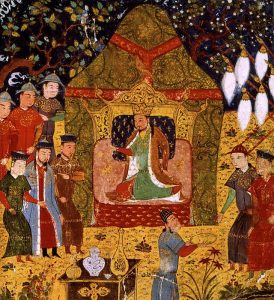
Genghis Khan’s first task over all the Mongols was to turn all the tribes into one nation. He developed a plan to unify the armies. His strategies included: bringing men from different tribes into the same unit, promoting leaders based on their leadership skills and their fighting ability, not on their tribal rank. He provided the same food to his ranks as to his leaders. Khan’s focus was to weaken the power of existing tribal leaders and gain loyalty from their troops to himself. 8 He organized his army into units of ten, then a hundred, then one thousand, and then ten thousand. Genghis allowed the smaller units to elect their leaders, but he appointed commanders who were loyal to him at the larger units. These strategies were the beginnings of where Genghis Khan became known for his military strengths. He was able to move massive amounts of soldiers, demonstrating the organization and maneuverability of his armies. 9 Khan’s organization was applied not only to his armies, but to the entire population of the people he conquered. He aligned a soldier’s family to the same division as the soldier. 10 Taking care of the soldier and his family inspired loyalty. Responsibility and command were given based on ability, not nobility. Under Khan’s system, if loyalty and ability were demonstrated, a soldier from a humble beginning could achieve rank and respect. Dennis Reinhartz states, “Khan’s nontraditional policies seem to have won him unusually faithful followers. Historians believe that, of the Khan’s trusted inner circle of commanders and companions, none ever betrayed him.”11
Weapons and horses were also critical to Genghis Khan’s military strategy. The bow and arrow were tools used by Mongols in their daily lives. In battle, arrows had a different purpose from hunting. The style of the arrow was lighter, which allowed them to be shot to greater distances. A second type of arrow with a heavy-iron tip was used for close-range fighting. A specialized group of archers on horseback could strike an enemy from 600 to 900 feet away. In battle, Mongol warriors also carried a lance with a sharp point and a hook to pull the enemy off his horse. The armor of a Mongol warriors was made of thick leather and covered most his body. Helmets were also made of leather and metal. Mongols were excellent horsemen and equipped their steeds with high quality gear. The leather saddles were made for comfort and allowed the Mongol soldiers to ride further. The stirrups gave the archers more control while shooting. In battle, there were extra horses so the riders could refresh a weary horse. These practices and tools for fighting gave the warriors more speed and agility in battles. Longer distances could be covered for battles. Better equipped armies became an advantage for the Mongols. 12
As a strategist, Genghis Khan was not beyond using tricks or spies to instill fear in his enemies before the battle even began. Advanced spies would enter a village to collect information on the size of the armies, the types of weapons they would face in battle, and the layout of the city. The spies would also leak information on the size of the army that Khan had, reporting a much larger army. Placement of the armies in wide front was another technique that Khan used to make it look as though he had a much larger army. Genghis Khan used this intelligence to carefully plan his attacks.13
Genghis Khan developed a courier system, called a yam, for quick and efficient communication. A group of messengers on horseback would travel along designated, secured routes with information or intelligence. The posts were stationed about a day apart for travel back and forth on the established routes. To communicate to the troops, Khan developed a flag system that was used to announce when battles would begin or where to attack from. 14
Understanding the background of Khan’s techniques and strategies gives insight into how he fought his battles. Khan carefully planned his conquests, winning the majority of his battles. When he was not successful, he would retreat, regroup, determine what went wrong, and attack again. In preparing for battle, Khan’s focus was to discover the weakest point for an assault and to execute based on that weakest link. This technique would increase the likelihood of a successful battle. 15
As Genghis Khan grew his armies and improved his military strategies, he began focusing on the larger areas to conquer. Around 1210, the Mongols moved into northern China to fight against the Jurchens. After three years of fighting, the Mongols made their way to the capital city, Zhongdu. Instead of fighting, the emperor offered Genghis Khan large amounts of gold, silver, and other valuables if the Mongols would withdraw. Initially, the offer was accepted; but Genghis Khan changed his mind when he learned that the Tanguts moved their capital and was raising a large army to fight the Mongols. Genghis Khan felt betrayed, and he attacked with brutal force, using flaming arrows to burn the city down. During the campaign against the Tanguts, the battles ended with the emperor agreeing to pay tribute to the Mongols. Conquering this tribe added to the Mongols’ wealth. This tribe was known for its silk and wool cloth, and its herds. The Mongols also learned how to attack walled cities by using ladders to scale walls. They learned to protect themselves from spears or arrows by make over-sized shields. 16
As the Mongols’ conquering continued. The violent display of death and destruction was also a warning for other tribes not to fight the Mongols. The threat worked; the Koreans who lived to the east paid the Mongols a large tribute each year with the promise they would not attack the Mongol lands. 17
The next challenge for Genghis Khan was Sultan Ala ad-Din Muhammad, known as the Khwarazm Shah. About 1217, the empire of Khwarazm, which was located west of Mongolia was the strongest military power in Persia. The empire was also one of the richest due to two major stopping posts along the Silk Road. When the Shah learned of Khan’s conquests in northern China, the Shah decided Khan was a threat to his empire. The Shah leveraged merchant spies to gain Khan’s acceptance of improving trade. Khan sent gold, ivory, and other gifts with the message that he had enough land and was not planning on attacking the Shah and his empire. In 1218, a Mongol trading caravan was attacked in the city of Utrar. Khan was furious and asked the Shah to turn the governor over to him for punishment. The Shah refused. Khan prayed for vengeance and started a seven-year war against the Shah. Khan issued a call to arms and raised an army of more than two hundred thousand Mongols, Chinese, and Uighurs. Although Khan raised a lot of soldiers, his army was still half the size of the Shah’s. Khan knew if any chance of beating the Shah would require the use of strategy to outsmart the Shah. Khan began a smear campaign against the Shah. Letters were sent to the Shah indicating his key leaders were beginning to desert him. The Shah was fearful and delayed putting an overall commander in charge of his army. The Shah disbursed his manpower which made them easy targets to defeat. Khan split his warriors into four corps and attacked on four fronts simultaneously. Khan appointed his sons or close confidants in charge of the four corps. The illusion was that Khan had more resources. Khan and his men used effective military strategies to quickly cause destruction. 18
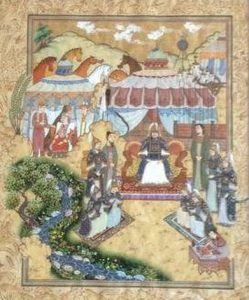
Khan and his senior general, Subedei, planned to attack Bukhara. Khan’s strategy was a surprise attack, by approaching the enemy from a secret route that put Khan’s army behind the enemy lines. This strategy allowed Khan to kill all of the defenders, and the move to Bukhara destroyed the city. The next planned battle was Samarkand, home to the Shah and his family. Khan took the city, but the Shah and his son escaped with their armies on different routes. 19
Khan and his son, Touli, went after the Shah’s son, Jalal-ad-Din across the Khwarazm Empire. The Mongols defeated Jalal-ad-Din in every battle except for one. Jalal-ad-Din was elusive and was never caught by the Mongols. He became a legend in Persian literature. During the seven-year pursuit, Khan’s empire grew.
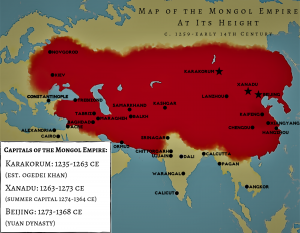
One of the greatest military achievements is credited to Khan’s son, Jebe, and Khan’s first general Subedei. During the chase of the Shah, Khan’s trusted advisors and their armies covered 8,000 miles over the course of three years, gaining territory as they caused destruction from the Caspian Sea through the Caucasus Mountains. They explored and claimed land near the Black Sea, increasing their empire along the way. The expansion became the pursuit instead of capturing the Shah. 20
Prior to returning to Mongolia, Genghis Khan outlined his plan for administering his empire. Personal representatives collected taxes and forwarded the tributes back to Mongolia. Troops were organized and a messenger service was created. In 1225, Khan returns to Mongolia with piles of gold, silk, jewels, and animals. He also brought prisoners who had special skills such as astronomers, blacksmiths, falconers, physicians, scribes, and weavers. 21
Khan was restless and left Mongolia again to pursue and old enemy who Khan felt had betrayed him. While travelling, Khan was thrown from his horse. Khan refused to return to Mongolia and kept pursuing more land. In August 1227, Khan died from either malaria or typhus.
Genghis Khan is remembered for massing a large Mongolian empire. Over time, he grew his empire by acquiring land, capturing talented individuals from lands he conquered, and utilizing their talent in his organization, and amassing gold, jewels, silk, and other commodities. He was also a warrior, whose tactics of brutal attacks were unforgivable; but successful. Khan is also recognized as a military strategist. Understanding the story of Genghis Khan, his rise to power, and that some of the techniques he developed for battle are foundational for future military leaders, and supports the position that Genghis Khan was a military success. While you may not agree with the savagery of his attacks, you can understand and perhaps appreciate, how he shaped the future of military strategies.
- Salem Press Biographical Encyclopedia, 2022, s.v. “Genghis Khan,” by Dennis Reinhartz. ↵
- Reinhartz, “Genghis Khan,” 1. ↵
- Reinhartz, “Genghis Khan,” 3. ↵
- Miriam Greenblatt, Genghis Khan and the Mongol Empire (New York: Benchmark Books, 2002), 12. ↵
- Greenblatt, Genghis Khan, 13. ↵
- Reinhartz, “Genghis Khan,” 2. ↵
- Greenblatt, Genghis Khan, 16. ↵
- Alison Behnke, The Conquests of Genghis Khan: Pivotal Moments in History (Minneapolis: Twenty-First Century Books, 2008), 59. ↵
- Funk & Wagnalls New World Encyclopedia, 2018, Funk & Wagnalls New World Encyclopedia, 1. ↵
- Behnke, Conquests of Genghis Khan, 60. ↵
- Salem Press Biographical Encyclopedia, 2022, s.v. “Genghis Khan,” by Dennis Reinhartz, 3. ↵
- Behnke, Conquests of Genghis Khan, 63. ↵
- Behnke, Conquests of Genghis Khan, 64. ↵
- Reinhartz, “Genghis Khan,” 3. ↵
- John Man, Genghis Khan: Life, Death, and Resurrection (New York: Thomas Dunne Books/St. Martin’s Press, 2005), 116. ↵
- Earl Rice Jr., Empire in the East: The Story of Genghis Khan (Greensboro: Morgan Reynolds Publishing, 2005), 112. ↵
- Behnke, Conquests of Genghis Khan, 23. ↵
- Behnke, Conquests of Genghis Khan. 27. ↵
- Behnke, Conquests of Genghis Khan, 29. ↵
- Behnke, Conquests of Genghis Khan, 32. ↵
- Behnke, Conquests of Genghis Khan, 34. ↵
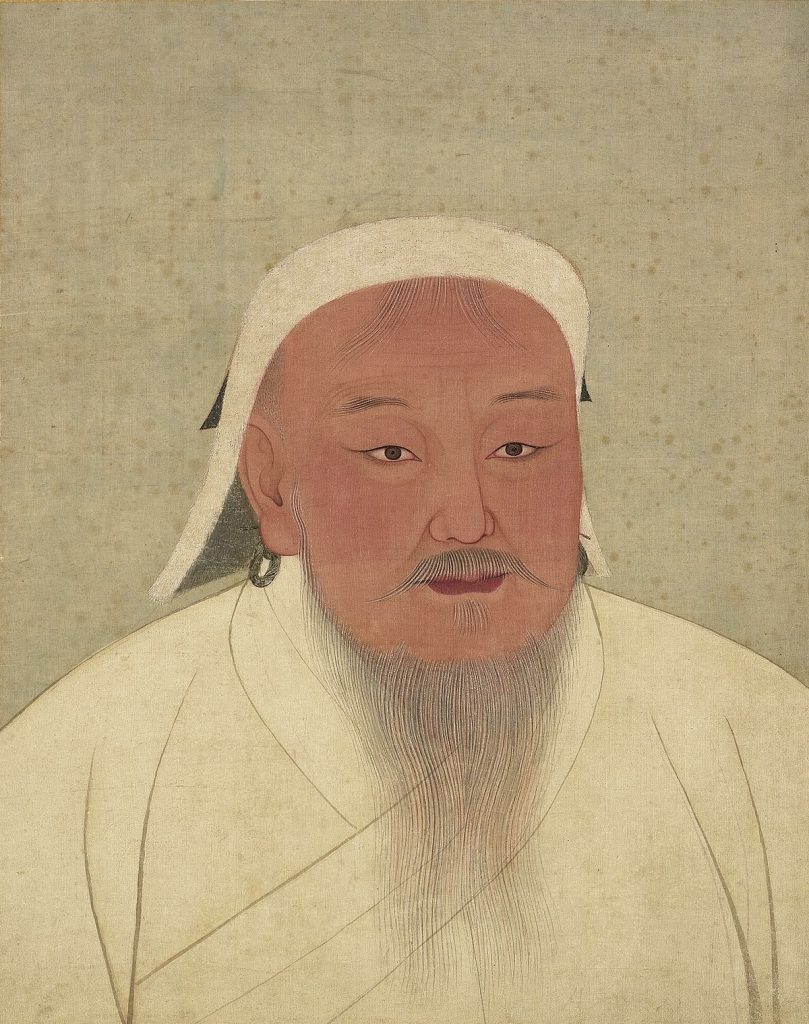
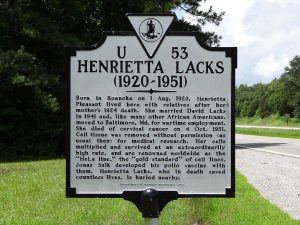
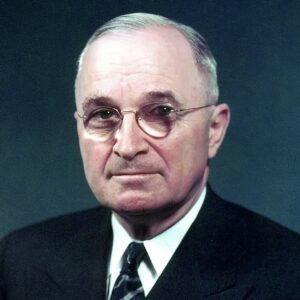
7 comments
Alyssa Leos
First of all I want to say congratulations on your article being nominated for an award. After reading about Genghis Khan previously, it was nice to read more about him. This was definitely filled with so much information. I learned more from your article than I did when being taught about him in highschool. Again congratulations on your article being nominated. Very well deserved!
Dejah Garcia
What a great article ive never heard of Genghis Khan before. While reading this i was able to use the imagery to help me connect to the background and Interpretation of the story. Overall I believe you did an awesome job ! Congratulations on your nomination !
Helena Griffith
Nicely described and well-written. Although Genghis Khan is well-known throughout history, not everyone is aware of him. I enjoyed your design because it provided thorough information about him. People will learn about him and his contribution via your essay. You gave an excellent explanation of every detail, from his early years to the battle, and the story flowed well. It was very entertaining to read. I gained fresh knowledge from your article. Excellent work!
Brandon Vasquez
Congratulations on your nomination! I know who Genghis Khan is and how he developed and expanded the Mongol Empire but I did not know exactly how he got there. Genghis Khan is famous in history but some of his tactics and strategies aren’t that well known among people. This article really highlighted these points and allowed me to understand Genghis Khan a little more.
Abigail Delarosa
What a great article. It was very informal and I learned a lot. I wrote about Genghis Khan as well but not about this time in his life. It was good to learn more about him. You had a great use of sources and your pictures really helped me paint a better picture of the story. Congratulations on the nomination. I wish you thte best of luck
Grace Ibarra
This article is very descriptive and your attention to detail really helps the reader stay engaged. Genghis Khan is definitely a name we all might have heard about but know little about. Your article will really help people understand his life a little more. I also really enjoyed all of the images! They are all so vibrant and fit very well with the article.
Sudura Zakir
Well written and nice description. I liked your concept it was detailed information about Genghis Khan although he was famous in history but not everyone knew about him. From your article, people will learn about him and his contribution. From his early life to war, you explained every part perfectly and the flow of the story was great. I enjoyed reading it a lot. Learned something new from your article. Nice work!!!!